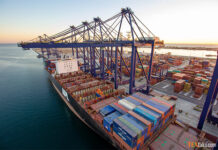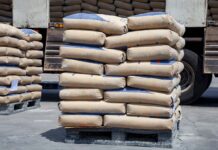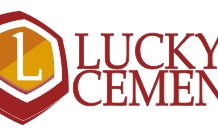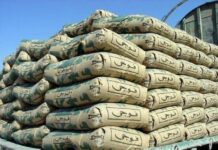Almost a decade ago a conman by the name of Sibtul Hasan Shah ran an infamous Ponzi scheme offering people to double their money, all in a matter of 70 days. Once a schoolteacher, Shah earned notoriety for his fraudulent scheme only to be jailed almost two years later leaving his investors in a complete state of emotional and financial distress. However, what if there was a way to actually double your investment and that too multiple times in a year without being scammed? Well, ever heard of cement stocks?. It so appears that cement stocks, in their entirety, remained the most robust among all investable sectors on the bourse during the past six years. Explained simply, had you invested Rs 10 lacs in the stocks of Kohat Cement only six years ago, by now you would have made Rs 4 crores, earning almost Rs 6 lacs every month during the period. That translates into an extraordinary return on investment (ROI) of 60% per month. Yes, you read that right: 60% per month! In other words, the original Rs 10 lacs would have purchased you 153,846 shares of Kohat Cement at Rs 6.5 per share, its price on 1st January, 2011, which has appreciated by a whopping 3,854% to Rs 257 per share at the end of September this year. On top of this staggering price appreciation, you would have earned another Rs 29 lacs as dividend income, taking the combined return for the period to over Rs 4 crores! Kohat, perhaps, is a good example from the cement sector, but it is certainly not the only one that explains why Pakistan’s stock market has been outperforming its regional counterparts for the past few years. “Cement stocks are a telltale of why Pakistan is Asia’s top performer,” Pakistan Stock Exchange (PSX)’s Managing Director Nadeem Naqvi told Profit in a recent interview — and he had a reason to say this The 21 cement companies, including allied businesses, listed on the PSX staged a sector-wide gain of almost 1,000%, or 936% to be precise, since December 30, 2010, according to the data compiled on September 19, 2016 by Insight Securities, our research partner for this report. Surprisingly, the cement stocks, for the period under review, offered a better yield than the real estate sector, which is usually the number one choice for investors. Cement sector’s return for the period is 600% higher than the highest return offered by a property located in a middle-range neighborhood of Lahore – the real estate price increases were taken from data compiled by Zameen.com, Pakistan’s largest real estate portal. Cement stocks also outperformed the KSE-100 Share Index, a benchmark to gauge the market’s overall performance, by 689% and contributed approximately one-fifth to the market’s overall growth during the same period – the market has appreciated 250% since January 2011.  “Pakistan’s stock market has given an average 20% return in the last 10 years,” Naqvi said. Even this year, the KSE-100 Index has rallied more than 25% and regained the status of the ‘Asian Tiger’ after becoming the best performing market in Asia and the fifth-best performing market globally in 2016.
“Pakistan’s stock market has given an average 20% return in the last 10 years,” Naqvi said. Even this year, the KSE-100 Index has rallied more than 25% and regained the status of the ‘Asian Tiger’ after becoming the best performing market in Asia and the fifth-best performing market globally in 2016.  The market continues to break record after record with major boost coming from news of its reclassification to Morgan Stanley Capital International (MSCI)’s Emerging Market Index. The reclassification, which will come into effect in July 2017, will see 27 Pakistani stocks join the international index. The development, according to experts, will result in up to $500 million (Rs 525,000 crores) in foreign portfolio investments by mid-2017. The companies that gave highest return A breakdown of statistics shows that eight cement companies have given a higher return than the sector’s average return (936%). Among the top three, Kohat Cement provided a total return (rate of return on an investment including interest, capital gains, dividends and distributions realized) of 5,454% followed by Maple Leaf Cement and Cherat Cement.
The market continues to break record after record with major boost coming from news of its reclassification to Morgan Stanley Capital International (MSCI)’s Emerging Market Index. The reclassification, which will come into effect in July 2017, will see 27 Pakistani stocks join the international index. The development, according to experts, will result in up to $500 million (Rs 525,000 crores) in foreign portfolio investments by mid-2017. The companies that gave highest return A breakdown of statistics shows that eight cement companies have given a higher return than the sector’s average return (936%). Among the top three, Kohat Cement provided a total return (rate of return on an investment including interest, capital gains, dividends and distributions realized) of 5,454% followed by Maple Leaf Cement and Cherat Cement.  Real estate boom behind the growth Analysts at Insight Securities attribute the gains in cement sector to the real estate boom, which started in early 2011 on the back of economic recovery and even helped some cement stocks post their highest-ever earnings in recent years. A large number of residential, commercial and public sector projects were completed in the last five years while many others are currently under construction: DHA City, Bahria Town, Naya Nazimbad, Ocean Towers, Bahria Town Tower and Bahria Icon Tower, Crescent Bay, Centaurus Mall, Emporium Mall, Orange Line and Metro Bus to name but a few. “Favorable government policies provided further support to the sector,” Insight Securities’ Director Research Zeeshan Afzal said. Explaining, he said cement prices in the country remained higher than that of international market hence local cement makers were able to earn better margins inside Pakistan. On the other hand, higher duties on cement imports protected and benefited the local manufacturers against dumping of cheap cement into the country. “Everything that is locally manufactured in Pakistan has certain government protection, whether it is cement, pipes or furniture. But I think that Pakistani cement industry is still quite competitive.” says Sayeed Tariq Saigol, CEO Maple Leaf Cement and Chairman All Pakistan Cement Manufacturers Association (APCMA). Moreover, a decrease in international coal prices in the last five years also brought down cost of production – coal accounts for up to 40% of the total production cost of cement. “Growth in volumes has been good in the past couple of years. This year we are looking at upwards of 15% growth. Also the utilization levels of the industry have been going up, which obviously means that the profit margins of the industry will go up as well and as a result the returns to shareholders and markets will continue to go up, at least for the next two years.”
Real estate boom behind the growth Analysts at Insight Securities attribute the gains in cement sector to the real estate boom, which started in early 2011 on the back of economic recovery and even helped some cement stocks post their highest-ever earnings in recent years. A large number of residential, commercial and public sector projects were completed in the last five years while many others are currently under construction: DHA City, Bahria Town, Naya Nazimbad, Ocean Towers, Bahria Town Tower and Bahria Icon Tower, Crescent Bay, Centaurus Mall, Emporium Mall, Orange Line and Metro Bus to name but a few. “Favorable government policies provided further support to the sector,” Insight Securities’ Director Research Zeeshan Afzal said. Explaining, he said cement prices in the country remained higher than that of international market hence local cement makers were able to earn better margins inside Pakistan. On the other hand, higher duties on cement imports protected and benefited the local manufacturers against dumping of cheap cement into the country. “Everything that is locally manufactured in Pakistan has certain government protection, whether it is cement, pipes or furniture. But I think that Pakistani cement industry is still quite competitive.” says Sayeed Tariq Saigol, CEO Maple Leaf Cement and Chairman All Pakistan Cement Manufacturers Association (APCMA). Moreover, a decrease in international coal prices in the last five years also brought down cost of production – coal accounts for up to 40% of the total production cost of cement. “Growth in volumes has been good in the past couple of years. This year we are looking at upwards of 15% growth. Also the utilization levels of the industry have been going up, which obviously means that the profit margins of the industry will go up as well and as a result the returns to shareholders and markets will continue to go up, at least for the next two years.”  As the world started embracing alternate power means, the prices of coal reduced from the peak of $130/ton in 2010 to $74/ton in 2016, hitting a five-year low of $52/ton earlier in April. On the other hand, the cost of logistics also decreased as the industry’s focus shifted to the local market. This is one of the reasons why the cement, which used to be exported to India, Afghanistan and South Africa is now sold within the country, and that, too, at higher margins. Will cement stocks continue their northbound rally? The cement stocks have given stellar performance between 2010 and 2016 (to date), but this leads to an obvious question: will cement stocks continue their bull run in years to come? Saigol seems to think so: “Growth in volumes has been good in the past couple of years. This year we are looking at upwards of 15% growth. Also the utilization levels of the industry have been going up, which obviously means that the profit margins of the industry will go up as well and as a result the returns to shareholders and markets will continue to go up, at least for the next two years.” However going forward things don’t seem to be as simple. The Association of Builders and Developers of Pakistan (ABAD) has threatened the federal government to halt all construction activities for an indefinite period if the newly imposed immoveable property valuation is not deferred. By contrast, market experts believe there’s not much the union can do to achieve its objectives. “Nothing substantial can be done to revert the said bill. The union will eventually have to get over it,” an analyst said requesting not to be quoted. ABAD’s call for construction cease is, perhaps, the smallest of all the challenges the sector might face going forward. According to reports published in the local newspapers, the sector is facing problems on the external front in all of its major export destinations: Afghanistan, South Africa, India and UAE. Iran is dumping its cheap cement in Afghanistan while the ongoing political tension between Islamabad and New Delhi has raised concerns about future of exports to India. On the other hand, UAE and South Africa have enhanced their own production, and no longer depend on Pakistani cement – in fact, South Africa has imposed an anti-dumping duty on the latter. As a result, Pakistan’s cement exports have shrunk in the last six years. The country’s cement exports reduced to a mere 5% of its total production capacity at the end of May 2015, down from 26% of 2008, Aurora said in a report. Even the latest fiscal year portrays a dismal picture in cement exports. According to data provided by Lucky Cement Limited, the industry’s exports registered a decline of 18.4% to 5.87 million tons during fiscal year 2016 compared to 7.19 million tons of the previous year. In the long term exports are very essential for a better, more stable outlook, according to analysts. Saigol however seems undeterred : “There has been a reduction in exports which is largely driven by the fact that the areas where we were exporting as a country have new cement plants coming up. Cement manufacturing globally is a localized business. Anywhere in the world where exports and imports take place, they are temporary, only to fill a gap.”
As the world started embracing alternate power means, the prices of coal reduced from the peak of $130/ton in 2010 to $74/ton in 2016, hitting a five-year low of $52/ton earlier in April. On the other hand, the cost of logistics also decreased as the industry’s focus shifted to the local market. This is one of the reasons why the cement, which used to be exported to India, Afghanistan and South Africa is now sold within the country, and that, too, at higher margins. Will cement stocks continue their northbound rally? The cement stocks have given stellar performance between 2010 and 2016 (to date), but this leads to an obvious question: will cement stocks continue their bull run in years to come? Saigol seems to think so: “Growth in volumes has been good in the past couple of years. This year we are looking at upwards of 15% growth. Also the utilization levels of the industry have been going up, which obviously means that the profit margins of the industry will go up as well and as a result the returns to shareholders and markets will continue to go up, at least for the next two years.” However going forward things don’t seem to be as simple. The Association of Builders and Developers of Pakistan (ABAD) has threatened the federal government to halt all construction activities for an indefinite period if the newly imposed immoveable property valuation is not deferred. By contrast, market experts believe there’s not much the union can do to achieve its objectives. “Nothing substantial can be done to revert the said bill. The union will eventually have to get over it,” an analyst said requesting not to be quoted. ABAD’s call for construction cease is, perhaps, the smallest of all the challenges the sector might face going forward. According to reports published in the local newspapers, the sector is facing problems on the external front in all of its major export destinations: Afghanistan, South Africa, India and UAE. Iran is dumping its cheap cement in Afghanistan while the ongoing political tension between Islamabad and New Delhi has raised concerns about future of exports to India. On the other hand, UAE and South Africa have enhanced their own production, and no longer depend on Pakistani cement – in fact, South Africa has imposed an anti-dumping duty on the latter. As a result, Pakistan’s cement exports have shrunk in the last six years. The country’s cement exports reduced to a mere 5% of its total production capacity at the end of May 2015, down from 26% of 2008, Aurora said in a report. Even the latest fiscal year portrays a dismal picture in cement exports. According to data provided by Lucky Cement Limited, the industry’s exports registered a decline of 18.4% to 5.87 million tons during fiscal year 2016 compared to 7.19 million tons of the previous year. In the long term exports are very essential for a better, more stable outlook, according to analysts. Saigol however seems undeterred : “There has been a reduction in exports which is largely driven by the fact that the areas where we were exporting as a country have new cement plants coming up. Cement manufacturing globally is a localized business. Anywhere in the world where exports and imports take place, they are temporary, only to fill a gap.”  Pakistan has a per capita cement consumption of 140 kg, the lowest in the region and faces a shortage of nine million low-income housing units. This implies that the cement sector has an eminent growth prospect at the local front. The State Bank of Pakistan has projected a GDP growth rate of 5% to 6% for the current fiscal year, much of which will come at the backdrop of CPEC. The $51.5 billion strategic project is likely to result in multiple infrastructure projects. “CPEC is not just a long road,” said Tahir Abbas, who is Assistant Vice President Investment Research at Arif Habib Limited. “It brings with itself related projects like housing colonies, petrol pumps and markets.” These related projects will create jobs and drive growth in all sectors of the economy: construction (cement and real estate), fast moving consumer goods (FMCGs), and automobile, to name a few. Cement will be one of the major benefactors in the process as the commodity’s direct consumption is involved for the completion of such projects. In other words, local market will continue to be the main consumer of the country’s cement production in near future. “The industry’s focus will shift back to exports only by 2019, after local demand gets saturated. The surplus will then be casted off in exports,” Abbas, the analyst, said. Explaining, the analyst said five major cement players have announced to expand their production capacity, which will take the sector’s total capacity to 68 million tons from the current 45 million tons. When the target is achieved, excess capacity will need to be exported, he said but it will take a couple of years to reach that point. “As expansions are completed, surplus (excess supply) will lead to reduced prices, hence, it will lower the margins,” said retired Brig. Asmatullah Khan Niazi, Executive Director Fateh Jang Plant, Fauji Cement Limited. “Until then [for the next three years], demand will remain at par with supply.” Saigol agrees but adds, “There is a big difference between announcing plans and the ground work actually starting. There are a lot of land availability issues, lease issues, financing issues and things like that. Therefore not all plans to install new plants will be executed. Secondly, there’s a high potential for the local demand to continue increasing which should be able to absorb the new capacity.” The cement makers are betting on the local market, but some reports also suggest a large Chinese player may enter Pakistan and create disruption by dumping all of its excess capacity (about 40 to 50 million tons) in the local market. Large cement companies from China, known to play by ‘economies of scale’, are now heard of gearing up their sails to Pakistan. This is followed by an estimable success of the same in the Indonesian market where local margins fell as international giants took over. One of the largest Chinese cement manufacturers, Anhui Conch disrupted the pricing mechanism in the Indonesian cement market by establishing three cement plants in three provinces in Kalimantan and another one in West Papua province. Can Chinese cement makers cause the same disruption in the Pakistani market? The dynamics of the cement market in Pakistan are very similar to that of the Indonesian market. Hence, the entry of a deep-pocketed Chinese player can prove to be an agonizing dent on the margins of the cement players, Afzal of Insight Securities said – as a result, the current margins (over 42%) of cement makers could go down by 10 to 15% in the next few years.
Pakistan has a per capita cement consumption of 140 kg, the lowest in the region and faces a shortage of nine million low-income housing units. This implies that the cement sector has an eminent growth prospect at the local front. The State Bank of Pakistan has projected a GDP growth rate of 5% to 6% for the current fiscal year, much of which will come at the backdrop of CPEC. The $51.5 billion strategic project is likely to result in multiple infrastructure projects. “CPEC is not just a long road,” said Tahir Abbas, who is Assistant Vice President Investment Research at Arif Habib Limited. “It brings with itself related projects like housing colonies, petrol pumps and markets.” These related projects will create jobs and drive growth in all sectors of the economy: construction (cement and real estate), fast moving consumer goods (FMCGs), and automobile, to name a few. Cement will be one of the major benefactors in the process as the commodity’s direct consumption is involved for the completion of such projects. In other words, local market will continue to be the main consumer of the country’s cement production in near future. “The industry’s focus will shift back to exports only by 2019, after local demand gets saturated. The surplus will then be casted off in exports,” Abbas, the analyst, said. Explaining, the analyst said five major cement players have announced to expand their production capacity, which will take the sector’s total capacity to 68 million tons from the current 45 million tons. When the target is achieved, excess capacity will need to be exported, he said but it will take a couple of years to reach that point. “As expansions are completed, surplus (excess supply) will lead to reduced prices, hence, it will lower the margins,” said retired Brig. Asmatullah Khan Niazi, Executive Director Fateh Jang Plant, Fauji Cement Limited. “Until then [for the next three years], demand will remain at par with supply.” Saigol agrees but adds, “There is a big difference between announcing plans and the ground work actually starting. There are a lot of land availability issues, lease issues, financing issues and things like that. Therefore not all plans to install new plants will be executed. Secondly, there’s a high potential for the local demand to continue increasing which should be able to absorb the new capacity.” The cement makers are betting on the local market, but some reports also suggest a large Chinese player may enter Pakistan and create disruption by dumping all of its excess capacity (about 40 to 50 million tons) in the local market. Large cement companies from China, known to play by ‘economies of scale’, are now heard of gearing up their sails to Pakistan. This is followed by an estimable success of the same in the Indonesian market where local margins fell as international giants took over. One of the largest Chinese cement manufacturers, Anhui Conch disrupted the pricing mechanism in the Indonesian cement market by establishing three cement plants in three provinces in Kalimantan and another one in West Papua province. Can Chinese cement makers cause the same disruption in the Pakistani market? The dynamics of the cement market in Pakistan are very similar to that of the Indonesian market. Hence, the entry of a deep-pocketed Chinese player can prove to be an agonizing dent on the margins of the cement players, Afzal of Insight Securities said – as a result, the current margins (over 42%) of cement makers could go down by 10 to 15% in the next few years.  Afzal further says the Chinese can bring their idle capacity and deploy it in Pakistan, which will first create competition for the local players and later on kill it to triumph into becoming the leading monopoly with the largest market share. There is nothing official regarding Anhui Conch’s interest in the Pakistani market so far. On the other hand, some analysts polled by Profit suggest this scenario is unlikely, at least in the immediate future, because it will require one to two years before a Chinese player can actually pose any threat to the local competition. “Even if a Chinese cement company comes, the CPEC project will buy from whatever cement plant is closest to them along the route. Freight cost is a very big element in this picture. So if they acquire Dewan’s plant in the South for example, which is ‘Saadi Cement’, instead of the ‘Pakland plant’ in Karachi then Saadi cannot supply goods to a project that is taking place in Balochistan. Those goods will have to come from a plant that is closer to them – they just won’t be competitive.” says Saigol.
Afzal further says the Chinese can bring their idle capacity and deploy it in Pakistan, which will first create competition for the local players and later on kill it to triumph into becoming the leading monopoly with the largest market share. There is nothing official regarding Anhui Conch’s interest in the Pakistani market so far. On the other hand, some analysts polled by Profit suggest this scenario is unlikely, at least in the immediate future, because it will require one to two years before a Chinese player can actually pose any threat to the local competition. “Even if a Chinese cement company comes, the CPEC project will buy from whatever cement plant is closest to them along the route. Freight cost is a very big element in this picture. So if they acquire Dewan’s plant in the South for example, which is ‘Saadi Cement’, instead of the ‘Pakland plant’ in Karachi then Saadi cannot supply goods to a project that is taking place in Balochistan. Those goods will have to come from a plant that is closer to them – they just won’t be competitive.” says Saigol.  Opening up a cement plant in Pakistan requires a Mine Concession — prospecting licence required for undertaking mega mineral projects — and acquiring one is a tedious procedure. This can be one major reason the Chinese cement giant may acquire Dewan Cement, a relatively smaller player with existence in both southern and northern regions of the country, and increase its production capacity by bringing in investment and resources. Abbas, the research analyst at Arif Habib Limited, believes that installation of such an aggressive capacity is highly unlikely. Yet, if it happens, it may take no less than one-and-a-half years for the process to complete. Another barrier to entry for a new player could be the alleged existence of a ‘cement cartel’ that protects existing cement manufacturers interests. Saigol, while talking to ‘Profit’, said that he could not comment on any ‘cartel’ but provided facts such as price variations between different cement manufacturers and that some plants may be operating at 60% capacity while others are operating at 102%. Therefore this notion of a “cement cartel”, he said, is a judgement call more than anything else. Not ruling out this possibility, major cement manufacturers, namely Lucky, Kohat, Pioneer, Cherat and DG Khan, have already announced their expansion plans to battle with the anticipated pressure from Chinese players.
Opening up a cement plant in Pakistan requires a Mine Concession — prospecting licence required for undertaking mega mineral projects — and acquiring one is a tedious procedure. This can be one major reason the Chinese cement giant may acquire Dewan Cement, a relatively smaller player with existence in both southern and northern regions of the country, and increase its production capacity by bringing in investment and resources. Abbas, the research analyst at Arif Habib Limited, believes that installation of such an aggressive capacity is highly unlikely. Yet, if it happens, it may take no less than one-and-a-half years for the process to complete. Another barrier to entry for a new player could be the alleged existence of a ‘cement cartel’ that protects existing cement manufacturers interests. Saigol, while talking to ‘Profit’, said that he could not comment on any ‘cartel’ but provided facts such as price variations between different cement manufacturers and that some plants may be operating at 60% capacity while others are operating at 102%. Therefore this notion of a “cement cartel”, he said, is a judgement call more than anything else. Not ruling out this possibility, major cement manufacturers, namely Lucky, Kohat, Pioneer, Cherat and DG Khan, have already announced their expansion plans to battle with the anticipated pressure from Chinese players.  Smaller players are also expected to follow suit in 2016-17. This fresh wave of expansion is expected to take the industry’s annual production capacity to 68.1 million tons, up from the current 45.6 million tons, say experts. In either scenario, the margins are likely to be under pressure going forward because of increasing capacity. “Cement industry usually has a 10-year production cycle. Presently, the industry has reached a stage where capacity utilization is close to 90%, i.e. the market consumes almost all cement produced in the country. This has resulted in high profit margins for the whole sector. This could go down to around 70% after the announced capacity enhancements become operational. This means supply will exceed demand, and put pressure on margins and eventually bring them down.” explains Arif Habib, Chairman Arif Habib Group, one of the country’s largest business conglomerates and parent company of Power Cement. “Due to larger volumes, the overall profitability [of cement sector] should not be affected,” says Habib.
Smaller players are also expected to follow suit in 2016-17. This fresh wave of expansion is expected to take the industry’s annual production capacity to 68.1 million tons, up from the current 45.6 million tons, say experts. In either scenario, the margins are likely to be under pressure going forward because of increasing capacity. “Cement industry usually has a 10-year production cycle. Presently, the industry has reached a stage where capacity utilization is close to 90%, i.e. the market consumes almost all cement produced in the country. This has resulted in high profit margins for the whole sector. This could go down to around 70% after the announced capacity enhancements become operational. This means supply will exceed demand, and put pressure on margins and eventually bring them down.” explains Arif Habib, Chairman Arif Habib Group, one of the country’s largest business conglomerates and parent company of Power Cement. “Due to larger volumes, the overall profitability [of cement sector] should not be affected,” says Habib.  There seems to be a consensus that profitability of the cement sector will be high at least in the medium term. Will this translate into similar levels of share price appreciation as seen in the past? Asnan-ul-Haq, Director Al-Haq Securities thinks it will not. “Those were extraordinary times. Based on increasing profitability the share prices may increase by another 10 to 20% and the dividend yield should also be good. However expecting similar returns is out of the question now,” he says. Habib adds: “Even at ‘these [price] levels’, the Pakistani stock market in general is undervalued and should expect to see a further increase in share prices in the future.” “Pakistani market is operating at a price to earnings multiple of around 9 while internationally markets are operating at multiples of 16 to 18. I feel our market will reach an average multiple of around 12 in the medium term,” Habib says – a price to earnings ratio indicates the dollar amount an investor can expect to invest in a company in order to receive one dollar of that company’s earnings.
There seems to be a consensus that profitability of the cement sector will be high at least in the medium term. Will this translate into similar levels of share price appreciation as seen in the past? Asnan-ul-Haq, Director Al-Haq Securities thinks it will not. “Those were extraordinary times. Based on increasing profitability the share prices may increase by another 10 to 20% and the dividend yield should also be good. However expecting similar returns is out of the question now,” he says. Habib adds: “Even at ‘these [price] levels’, the Pakistani stock market in general is undervalued and should expect to see a further increase in share prices in the future.” “Pakistani market is operating at a price to earnings multiple of around 9 while internationally markets are operating at multiples of 16 to 18. I feel our market will reach an average multiple of around 12 in the medium term,” Habib says – a price to earnings ratio indicates the dollar amount an investor can expect to invest in a company in order to receive one dollar of that company’s earnings.  The market reached 42,000 points level on November 7, as opposed to December, 2016 as predicted by analysts. It even breached 43,000 points level in the same month before shedding a few hundred points.
The market reached 42,000 points level on November 7, as opposed to December, 2016 as predicted by analysts. It even breached 43,000 points level in the same month before shedding a few hundred points.  Most analysts attribute this bullish sentiment to the market’s reclassification to MSCI EM Index next year and predict it will reach 45,000 level by June, 2017, if not earlier. With four out of 21 cement stocks – namely Lucky Cement, Kohat Cement, Maple Leaf Cement, and Fauji Cement – among the candidates under consideration to join MSCI’s Emerging Market Index, the entire sector is likely to receive more investment, say analysts. Cement sector generally grows in a ratio of two-and-a-half times the GDP growth, said Niazi of Fauji Cement. For example, if the GDP grows at 4%, the cement sector will grow at 10% during the same period, he added. “The cement sector will see maximum returns in the near future,” the retired brigadier said. “The next three years will exhibit gains similar to what we have seen in the last three years.” Most stock market experts and cement manufacturers agree that the prospects for the cement sector are very bright for at least two to three years. A bulk of this growth will come on the back of large funds that the government is likely to allot for Public Sector Development Projects (PSDP) in the last budget before general elections of 2018.
Most analysts attribute this bullish sentiment to the market’s reclassification to MSCI EM Index next year and predict it will reach 45,000 level by June, 2017, if not earlier. With four out of 21 cement stocks – namely Lucky Cement, Kohat Cement, Maple Leaf Cement, and Fauji Cement – among the candidates under consideration to join MSCI’s Emerging Market Index, the entire sector is likely to receive more investment, say analysts. Cement sector generally grows in a ratio of two-and-a-half times the GDP growth, said Niazi of Fauji Cement. For example, if the GDP grows at 4%, the cement sector will grow at 10% during the same period, he added. “The cement sector will see maximum returns in the near future,” the retired brigadier said. “The next three years will exhibit gains similar to what we have seen in the last three years.” Most stock market experts and cement manufacturers agree that the prospects for the cement sector are very bright for at least two to three years. A bulk of this growth will come on the back of large funds that the government is likely to allot for Public Sector Development Projects (PSDP) in the last budget before general elections of 2018.
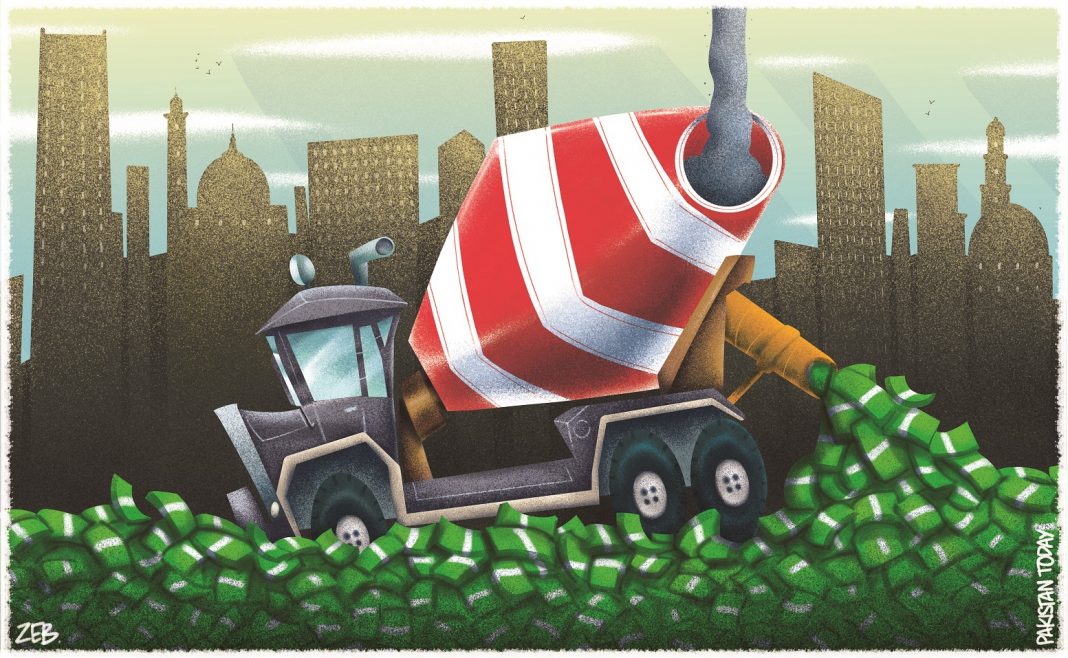
Why go to ‘Double Shahs’?
For the last 5 years, shares of the cement sector have been doubling money every few months. Has the cement bull run hit its peak or can Sayeed Saigol and his APCMA continue to deliver?






